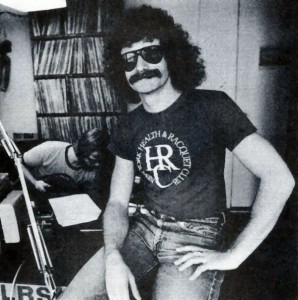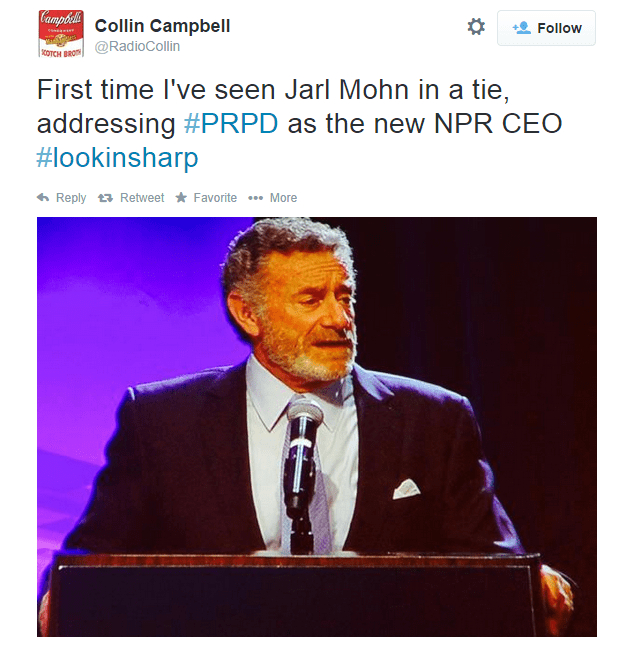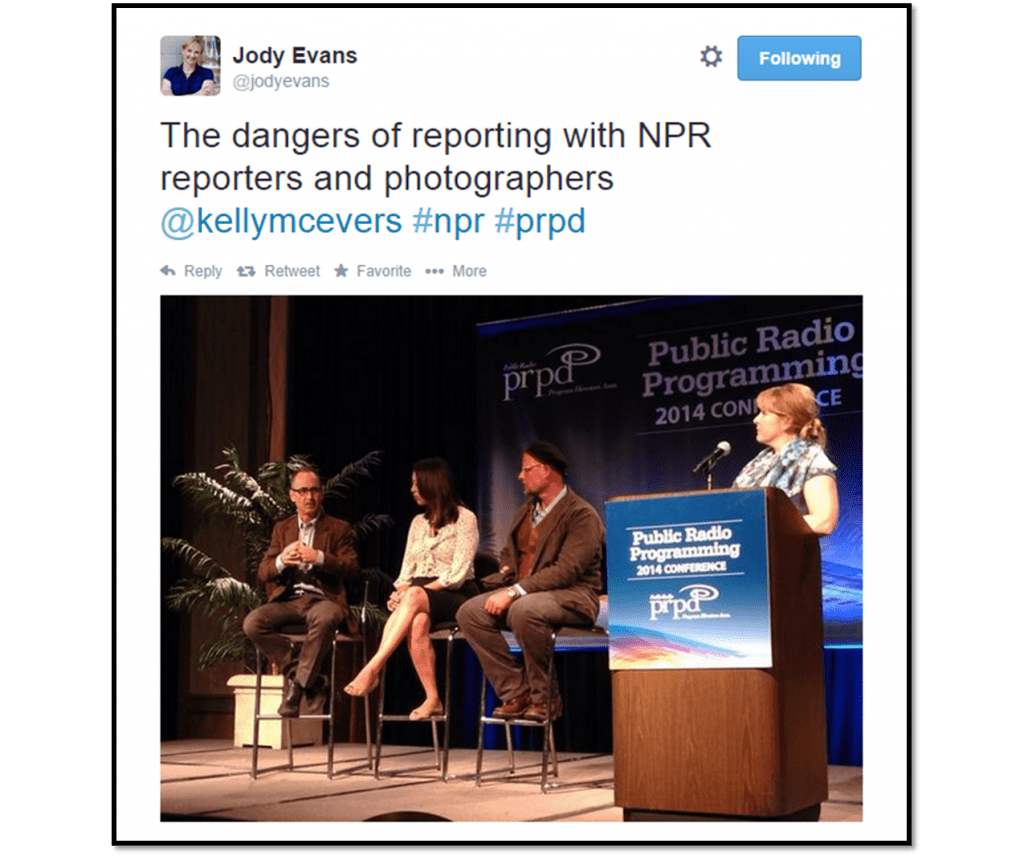While many of you reading this post spent last week in Indianapolis at The Radio Show attending Super Sessions and listening to CEO airchecks, I was in Portland at the Public Radio Program Directors convention that received virtually no press coverage outside of Current, public media’s primary media outlet.
That’s not a value judgment – it’s just a statement of fact. For radio’s major trade publications, it’s challenging enough to cover The Radio Show, much less a public radio conference a couple thousand miles away that is unfortunately scheduled at the exact same time.
While I’m sure that Indy was a great show, the PRPD conference was one of the best I’ve ever attended. It was the famous final scene for the head of PRPD, Arthur Cohen, who is stepping down after eight years of successful leadership. I was also honored with two presentations – the “connected car” and a fast-paced summary of the results of PRTS6, our public radio tech survey.
But the main reason the PRPD convention stood out was that its high points were all about what public radio does best (and what often where commercial radio comes up short): telling a great story.
It has been a commercial radio lament for several years now that “We just need to tell our story better.” Well, I guess there’s always next year.
Everywhere you turned, there was great storytelling at PRPD, so let me tell you about a couple.
One of the best examples of storytelling was an NPR-sponsored lunch presentation on Thursday, featuring four of its news correspondents who cover some of those most controversial stories, from the Middle East to West Africa to Ferguson, Missouri. The panel’s purpose was to bring home the rigors of news gathering to public radio’s PDs, many of whom are professional journalists themselves.
NPR’s EVP/Chief Content Officer, Kinsey Wilson, brought out correspondent Kelly McEvers, who introduced a packed ballroom to reporters Jason Beaubien and Elise Hu, along with photojournalist, David Gilkey.
From left: NPR’s Jason Beaubien, Elise Hu, David Gilkey & moderator Kelly McEvers
The group told their stories of the extreme challenges – physically, emotionally, and journalistically – of being on the scene at dramatic and often dangerous world-changing events. These reporters are at risk every day, and unlike military and law enforcement personnel at these scenes, they are simply trying to survive in intensely difficult conditions, while doing their jobs: filing stories, making deadlines, and giving all of us an idea of what’s really going on behind the scenes.
Each presented photos, video, and audio, but the most impactful moments were when they tried to verbally describe the challenges that accompany covering some of these most difficult stories. Whether it was correspondent Hu trapped inside a car wash in Ferguson, or Beaubien and Gilkey becoming emotionally involved with a sick little boy stricken with the Ebola virus, there were tears of empathy and admiration for these courageous journalists from even the most jaded programmers in the room.
It was emotional, moving, and powerful – just the way that great news stories and coverage on the radio should be.
Two days earlier in that same ballroom, NPR’s new CEO, Jarl Mohn, took the stage in his first-ever address to public radio’s PDs. As a former programmer – radio, TV, and cable – Mohn told stories of his days in radio, at MTV and Vh1, and at E!.
It was important that the room understand that the new head of radio’s premier news organization is a programmer himself, going way back in the ‘70s at legendary rock stations like WLRS/Louisville when he was known as Lee Masters. In that context, he gave his former boss, Bob Pittman, and Dan Mason a run for their “throwback money,” both of whom talked programming last week at The Radio Show.

Mohn told the story of how Talk Soup came into being – a program born out of desperation with virtually no budget that went on to become one of the biggest successes at E! The show was hosted by then-unknown Greg Kinnear, who brought his smartass boyish charm to absurd video clips from talk shows hosted by the likes of Jerry Springer and Sally Jesse Raphael.
But one of Mohn’s best stories from the programming archives was about the evolution of the MTV Video Music Awards. Originally, the network brought in big names like Don Ohlmeyer and Dick Clark to produce the award show. But as the ratings tailed off, it was clear that some innovation was necessary in order to give the VMAs more of an edgy, MTV feel.
Mohn “handed the keys” to young producer Joel Gallen, and gave him this charge to jumpstart the flagging awards show back in 1989:
“Program a surprise every 20 minutes.”
And that year, the VMAs were a lot different, punctuated by the nursery rhyme schtick of Andrew Dice Clay (a bit that subsequently earned him a lifetime ban from MTV), new genre categories (including “Best Heavy Metal Video” and “Best Rap Video”), Neil Young winning Best Video of the Year honors with the controversial “This Note’s For You,” a war of the words between Motley Crue’s Vince Neil and Guns N’ Roses’ Axl Rose, and a Pepsi moment with Madonna over her edgy “Like A Prayer” video.
So lots of surprises and a great deal of controversy. And higher ratings.
In Jarl’s stories from the programming trenches, there were lessons for public radio PDs about his philosophy – including doing big things on a shoestring budget and surprising consumers with content that while unexpected, is entertaining and memorable.
And from the broadcast radio vantage point, that idea of “logged spontaneity” that we have talked about in this blog is a theme that more programmers would be wise to take to heart – especially in a metered environment where big, standout, memorable moments matter.
 Baby steps, tweaks, and understated positioning may have had their place when radio was the only audio game in town. But today, commercial and public radio have to provide ongoing reminders of why they matter and why their content is essential. Stationality, promos that cut through, and great positioning have always been keys to differentiating brands and getting brands noticed.
Baby steps, tweaks, and understated positioning may have had their place when radio was the only audio game in town. But today, commercial and public radio have to provide ongoing reminders of why they matter and why their content is essential. Stationality, promos that cut through, and great positioning have always been keys to differentiating brands and getting brands noticed.
It is easier to be consistent, low-key, and modulated. It is a much greater task to generate electricity and energize legacy radio brands, whether it’s in a public or a commercial radio environment.
That was the theme in Portland at the PRPD Conference.
And it was a great story.
- What To Do If Your Radio Station Goes Through A Midlife Crisis - April 25, 2025
- A 2020 Lesson?It Could All Be Gone In A Flash - April 24, 2025
- How AI Can Give Radio Personalities More…PERSONALITY - April 23, 2025





It was truly inspiring to listen to Jarl preach about the importance of radio “basics” to a non-comm crowd. Promos, liners, sweepers, positioning… Those things are too often overlooked as “commercial” in the world of public radio. It’s no longer enough to just be a public radio station; we must have unique identities to compete against the rising tide of sources that vie for our potential audience’s attention.
Thanks Fred (and the whole Jacobs team) for all the great information about how our listeners are ingesting our content and where that audience is going.
Patrick, great to connect at PRPD. Really appreciate these comments about the conference and the need for radio to step it up – including public radio, as you note.
The problem, though is that whenever public radio tries to evolve, the hardcore highbrows and retired teachers and college professors who have been listening for years start complaining and threatening to pull their pledges–and the PDs don’t have the guts to realize that these people are going to die soon and are not the new audience for public radio–not to mention that this goes on with almost any format with an older-skewing demo. But because it supposedly takes six years to get a new public radio listener to start pledging, management goes chicken and doesn’t make the changes. It’s amazing how much public radio has evolved despite the cowardice of so many programmers. And let’s not forget that Mohn has already been castigated by the brigade who think that owning a tote bag gives them the right to run a radio station for no other reason than because he worked in commercial broadcasting and is a successful businessman. I hope for his sake that he comes out of NPR alive.
Mark, it’s a process to be sure. Our PRTS6 clearly showed the generational schism, an issue that everyone in public radio has to grapple with. New digital tools like the NPR One app are emblematic of the cross-currents in public radio – but also the entire system. It struck me as more than interesting that in coverage of The Radio Show in Indy that there were people extolling the virtues of digital while others were claiming that it’s a fraud that will never make money. These are the times in which we live…and work. Thanks for taking the time to comment.